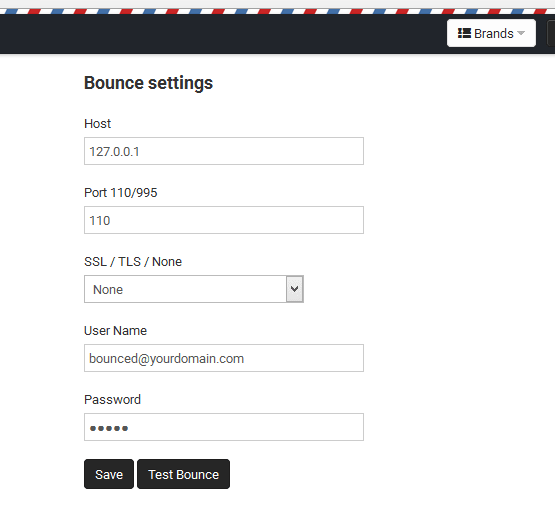
Email bounce handler update#
The Bounce Handler will mark as bounce or delete the bounce email from ALL groups where it exists.įor external databases (My Databases), check the "Enable Bounce Handler Action for each external database" option and then you will need to configure the update or delete action for each database separately when you create or edit a link to the database.

The unsubscribe and delete actions apply to ALL internal groups at a time though you might have sent the message to one or few groups only. Soft bounce and mail block bounce emails are not unsubscribed or deleted from groups.

The above Bounce Handler Actions are executed for hard bounce and FBL report emails only. – enable the option “Allow less secured applications” in the Gmail account’s parameters, section “Connection and security”. – try to unlock your GMail account because sometimes GMail blocks the application – make sure you enabled the IMAP connection on your GMail account If you have a connection issue with GMail whereas you’re absolutely 100% sure about your username and password, thy this: Server: (if it does not work, you should try ) Below are POP3/IMAP settings of some ISPs Select the account type: IMAP, POP3 or File System.Įnter the incoming mail server settings: IMAP Server Settings, POP3 Server Settings or File System. Instead of it, manually start the Bounce Handler to process bounce emails one or several times a day. Important! If you are on a wi-fi Internet connection, do not use the auto-check mode as it takes a lot of resources and traffic. The program will open the account settings in the Bounce Handler and prefill the Login field with your bounce (return) email address.Ĭheck the "Check account automatically each hour" option if you want to automate bounced emails processing. To receive bounce emails to a specific account and do not mix them up with other messages on your main account, create a separate account on your server such as and enter it into the "Bounce (Return) E-mail Address" field in the General Account Settings of G-Lock EasyMail7.Ĭlick on the “Add to Bounce Handler” button. Follow the steps below to configure the Bounce Handler and start processing bounce emails: Step 1. And you can change the sending server, email service provider and/or email template (content) and re-send blocked messages. It’s up to you to decide what to do with soft bounces and mail blocks. Soft bounce occur due to temporary issues with the receiving server and mail blocks occur because of the content or sending IP blacklisting issues. No action is applied to soft bounce emails and mail blocks as they are not related to invalid mailboxes. Inserts or deletes hard bounce emails and FBL reports emails from external databases depending on your settings ĭeletes transient bounce, challenge-response and auto-reply messages from the mail server. Updates external groups with the bounce email status Unsubscribes or deletes hard bounce emails and FBL reports from contact groups depending on your settings Using the Bounce Handler in G-Lock EasyMail7 you can process bounced emails after your email campaigns.Ĭlassifies bounce emails as hard bounce, soft bounce, mail block, unsubscribed or abuse/fraud feedback reports (FBL reports) When it comes to Amazon SES it is vital that this percentage is under 5% and if you have more than 10% your account will be blocked.

Having a 0% bounce rate is desirable, but it’s nearly impossible to achieve. The bounce ratio is the number of undelivered emails versus emails you sent.

It is a general prerequisite for sustainable email deliverability, your sender reputation, and conversion rates.Ī high bounce rate directly influences one’s reputation negatively. Just remember – a fully confirmed opted-in list is important.


 0 kommentar(er)
0 kommentar(er)
